MPO/MTP 12 Fibers – The MPO / MTP - 12 is a globally recognized standard interface for multimode and singlemode applications. The MPO-12 has been available for several decades and widely used as trunk cable connector for duplex and simplex applications. Among the most popular multifiber count to use when interconnecting high density patch panels. MPO 12 fiber connectors are abundantly found in the field and remain the connector of choice for most applications. Each 12 fiber MPO connector is able to establish a single 40G link. But are more often used to establish back end trunk connections.The MPO-12 is a globally recognized standard interface for multimode and singlemode applications. The MPO-12 has been available for several decades and widely used as trunk cable connector for duplex and simplex applications.
What is Multi Fiber Push On (MPO)
Multi Fiber Push On, also known as MPO, was originally manufactured to facilitate high-density termination and support high speed communication networks. What started as a 12-fiber single row connector, has now evolved into 8 and 16 single row fibers that have the capability to be stacked together to create 24, 36 and 72 fiber connectors while using multiple precision ferrules. The standard for these MPO styles has been established by the International Electrotechnical Commission (IEC) and the Telecommunications Industry Association (TIA). The international standard is known as IEC-61754-7 where as the TIA standard is TIA-604-5.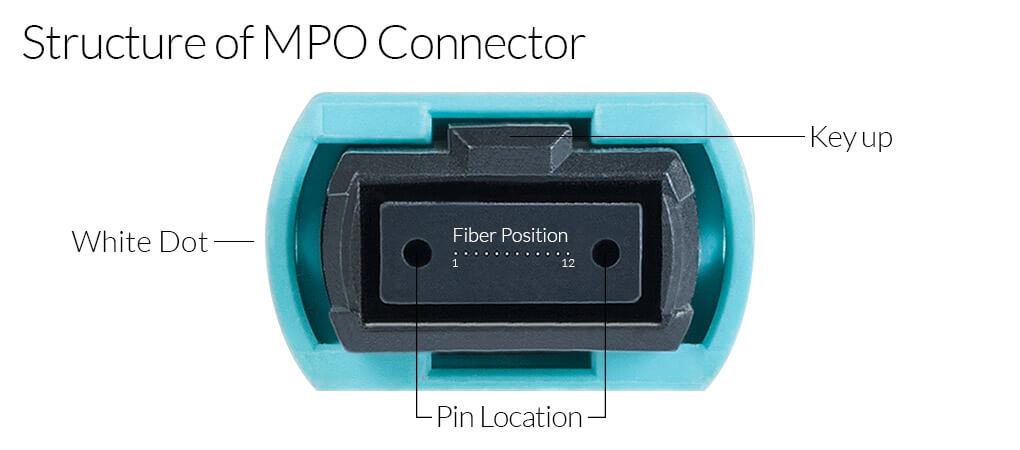
MT Ferrule
The mechanical transfer ferrule, a multi-fiber ferrule, is important for fiber alignment. It’s required to hold intense tolerances for precision during the molding process as this affects the shape, tolerance and material composition of alignment pins. The result will determine the alignment of the pins and holes as well as the eccentricity and pitch of the fiber.
MPO / MTP Connector
MTP connectors are designed to enhance optical signal and mechanical performance while providing lower insertion loss over MPO connectors. The ferrule of the MTP connector floats to retain physical contact on mated pairs if there is strain on the cable. The elliptical shaped, stainless steel guided pins in an MTP connector are less likely to cause damage compared to an MPO connector’s pins. The MPO connector has chamfered guided pins that can chip the ferrule and cause the material to drop into the guided pin holes or on the ferrule end face. MTP connectors are built with metal pin clamps that help center the push spring. The spring design prevents damage by maximizing ribbon clearance for 12 fiber and multifiber applications. A variety of MTP connectors are offered to accommodate a variety of applications: Type of boot, round or loose fiber cable, oval jacket or bare ribbon fiber, just to name a few.
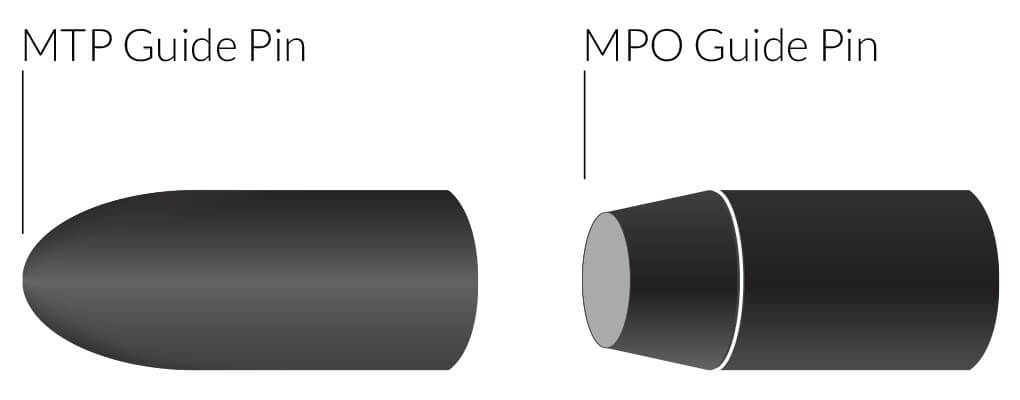
Wiring
Below are the four types of wiring using 12-pin MPO / MTP connector: Straight-through, cross-over, pair flipped, and universal.
Straight through, pair flipped and Universal wiring are all configured key up to key-down for mirrored signals. However, they do vary based on their uses. Straight through wiring are mostly used for patch panels. Pair flipped wiring incorporates a duplex pair-wise flip with the fiber location left to right connector and universal wiring incorporates an even/odd flip with the same left to right fiber location. Cross-over wiring is configured as key-up to key-up with unmirrored signals. Crossover uses include switches, transceivers, and electronic devices.
| Type | Internal Connection | Connector |
| Type A (Straight-through) | 1:1 | Key up to Key down |
| Type B (Cross-over) | Crossed | Key up to Key up |
| Type C (Pair Flipped) | Pairs Crossed | Key up to Key down |
| Universal | Key up to Key down |
Type A (Straight-through)

| Connector | Fiber Arrangement (with Key up view) | |||||||||||
| A | 1 | 2 | 3 | 4 | 5 | 6 | 7 | 8 | 9 | 10 | 11 | 12 |
| B | 1 | 2 | 3 | 4 | 5 | 6 | 7 | 8 | 9 | 10 | 11 | 12 |
Type B (Cross-over)

| Connector | Fiber Arrangement (with Key up view) | |||||||||||
| A | 1 | 2 | 3 | 4 | 5 | 6 | 7 | 8 | 9 | 10 | 11 | 12 |
| B | 12 | 11 | 10 | 9 | 8 | 7 | 6 | 5 | 4 | 3 | 2 | 1 |
Type C (Pair Flipped)

| Connector | Fiber Arrangement (with Key up view) | |||||||||||
| A | 1 | 2 | 3 | 4 | 5 | 6 | 7 | 8 | 9 | 10 | 11 | 12 |
| B | 2 | 1 | 4 | 3 | 6 | 5 | 8 | 7 | 10 | 9 | 12 | 11 |
Universal

| Connector | Fiber Arrangement (with Key up view) | |||||||||||
| A | 1 | 2 | 3 | 4 | 5 | 6 | 7 | 8 | 9 | 10 | 11 | 12 |
| B | 1 | 3 | 5 | 7 | 9 | 11 | 12 | 10 | 8 | 6 | 4 | 2 |
12-Fiber MTP Cabling Applications
The 12-fiber MTP cabling system is usually used in the following standards: 40GBASE-SR4, 40GBASE-PLRL4, and 40GBASE-PLR4. 40GBASE-SR4 is used for 40G transmission in short distances up to 150 meters over OM4 fibers. 40GBASE-PLRL4 and 40GBASE-PLR4 support transmission distance over single-mode fiber up to 1.4km and 10km separately. These standards use 40G parallel transceivers with 12-fiber MTP interfaces.
12-Fiber MTP Cabling Connectivity Components
12-Fiber MTP Trunk Cable: MTP trunk cable can be regarded as MTP to MTP fiber patch cable. MTP trunk cable is terminated with MTP connectors on both ends. The MTP connectors can be male (with guide pin on the contact interface) or female (without guide pin). As above mentioned, MTP cables can be divided into different types: Polarity A, Polarity B and Polarity C. A previous of my article “Understanding Polarity in MPO System” has introduced the polarity of MTP components. You can follow this article about the MTP polarity details.
The most commonly used MTP trunk cable is a single strand of cable, which can provide duplex 40G transmission at the same time. There are also MTP trunk cables which are composed by several strands of cables. Take the example of 12-fiber MTP trunk cables as shown in the following picture. On the left of this picture, there is a 12-fiber MTP trunk cable which is a single strand cable. On the right of this picture, there is a 72-fiber MTP trunk cable which is composed by 6 strands of 12-fiber MTP trunk cable.
12 Fibers MPO for 10G 40G 100G Data Center
The MPO 12 fiber connector was the first MPO connector which had enough repeatable performance to be accepted in Data Centers. The 24, 48 and 72 were OK for FTTX but they were not good enough for high data, loss-sensitive applications. So with the MPO 12 fiber connector we started to see a real trend towards Data Center Backbone cabling that could be adapted over time. This is called ‘future-proofing’ or ‘migrating’. If you build a backbone with a 12 fiber MPO connector, you can basically put any connection on the end to be future proofed (LC, MTRJ, SC etc). This was really advantageous in the early day of Data Centers because nobody really knew what type of connector interface they needed on the switch/server. So basically the MPO 12 became the connector of choice in most backbone cabling infrastructures. The majority of Data Centers today are built with MPO 12 fiber in the backbone and MPO-LC harnesses connecting to equipment such as switches and servers. Most of the equipment today still has an LC transceiver interface therefore the harness is required to convert from MPO in the backbone to LC at the port.
 EN
EN ES
ES DE
DE
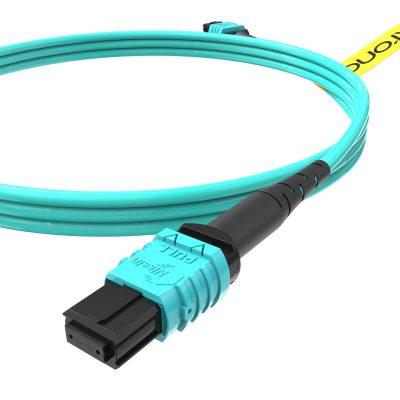 3.3ft MTP/MPO 12-fiber 10GB/40GB 50/125 OM3 Multimode Optical Fiber Patch Cord - Aqua, Type-B (1M)
3.3ft MTP/MPO 12-fiber 10GB/40GB 50/125 OM3 Multimode Optical Fiber Patch Cord - Aqua, Type-B (1M) 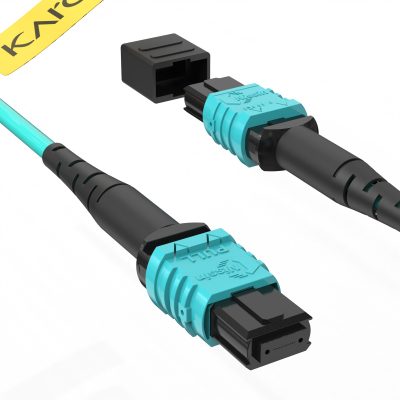 50ft MTP/MPO 12-fiber 10GB/40GB 50/125 OM3 Multi-mode Fiber Optic Cable - Aqua, Type-B(15M)
50ft MTP/MPO 12-fiber 10GB/40GB 50/125 OM3 Multi-mode Fiber Optic Cable - Aqua, Type-B(15M) 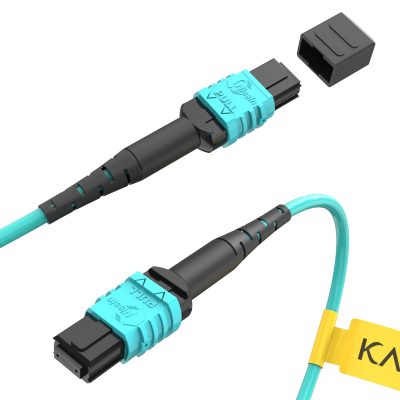 100ft MTP/MPO 12-fiber 10GB/40GB 50/125 OM3 Multi-mode Fiber Optic Cable – Aqua, Type-B (30M)
100ft MTP/MPO 12-fiber 10GB/40GB 50/125 OM3 Multi-mode Fiber Optic Cable – Aqua, Type-B (30M) 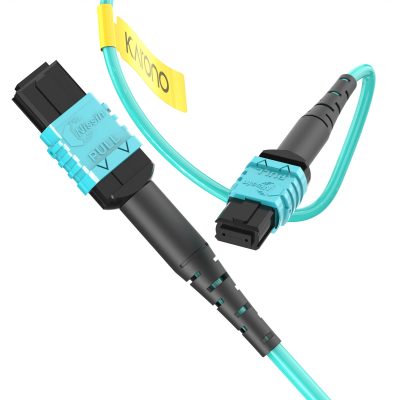 10ft MTP/MPO 12-fiber 10GB/40GB 50/125 OM3 Multi-mode Fiber Optic Cable - Aqua, Type-B (3M)
10ft MTP/MPO 12-fiber 10GB/40GB 50/125 OM3 Multi-mode Fiber Optic Cable - Aqua, Type-B (3M) 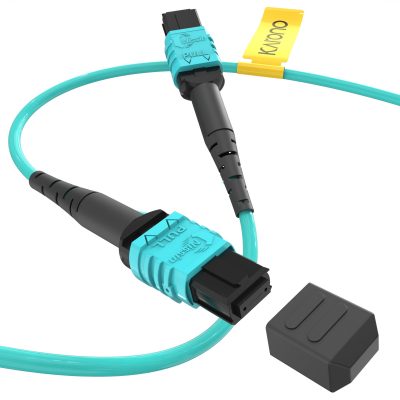 23ft MTP/MPO 12 Fibers 40GB 50/125 OM3 Multimode Fiber Optic Patch Cord – Aqua, Type-B (7M)
23ft MTP/MPO 12 Fibers 40GB 50/125 OM3 Multimode Fiber Optic Patch Cord – Aqua, Type-B (7M) 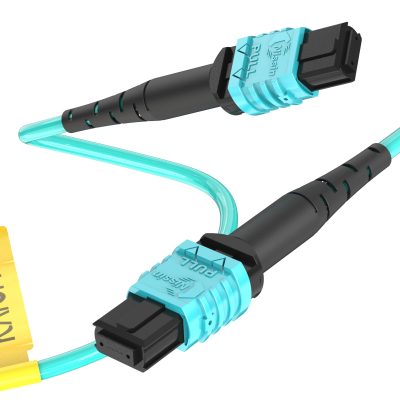 165ft MTP/MPO 12-fiber 10GB/40GB 50/125 OM3 Multi-mode Fiber Optic Cable – Aqua, Type-B (50M)
165ft MTP/MPO 12-fiber 10GB/40GB 50/125 OM3 Multi-mode Fiber Optic Cable – Aqua, Type-B (50M)